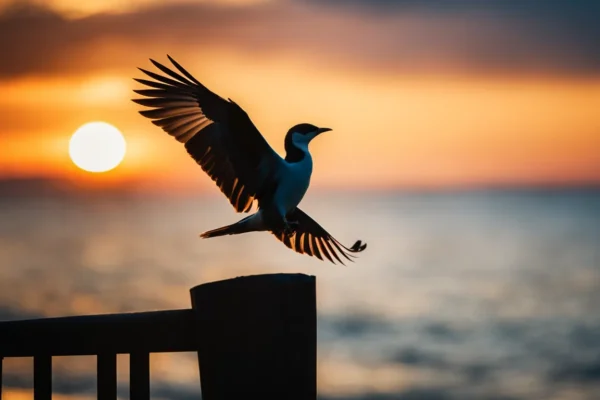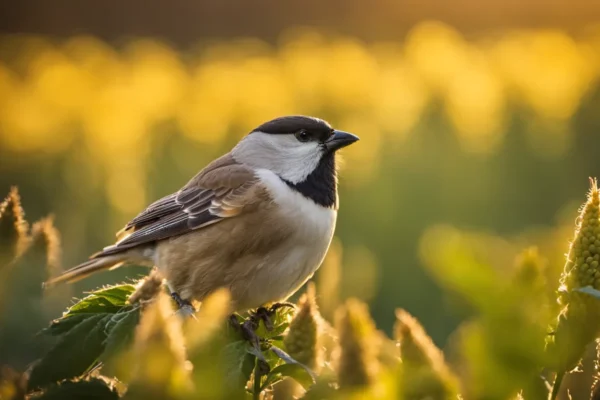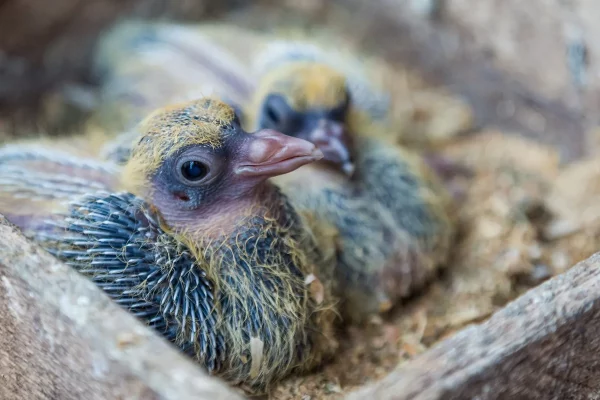Bears are classified as caniforms, or carnivorans that resemble dogs, while being members of the carnivoran order.
(In a previous post, we discussed the omnivorous nature of dogs and the reasons for their classification as “omnivorous with a carnivorous predisposition.”
It’s hard to imagine a bear could hunt and capture a deer given its “omnivorous with a carnivorous predisposition,” stereotypically “lazy” personality, and opportunistic hunting style—especially when contrasted with the speed and agility of deer.
This perception is not far from the reality: mature, healthy deer are not typically the primary source of food for the bears that coexist with them.
I welcome you to read this article to learn which bears eat deer, when they may do so, and what sort of deer they consume. But let’s first have a quick glance at each animal.
Some Remarks Regarding Deer
These seemingly harmless-looking herbivores are really hoofed animals with long, powerful legs, large ears, small tails, and antlers—which are exclusively seen on males in most species—that make them good runners and potentially lethal opponents in combat.
Different species have different body sizes; the moose has the greatest (up to 2.6 meters and 800 kg) and the northern pudu has the smallest (maximum 32-35 cm and 6 kg).
Although they may be found in a variety of environments, deer often like the wide spaces of savanna and grassland, or the places halfway between forests and bushy areas, since these locations provide more opportunities for hiding.
Deer have great leaping and swimming skills in addition to their speed and agility. They can see rather well at night because to a coating of tissue in their eyes.
Given this, deer seem to be much too difficult for a bear to capture as food, yet nonetheless…
Do Bears Chase Deer?
The bear is a clever and effective feeder. In order to save as much energy as possible, it will determine whether capturing prey is worth the effort.
A bear is able to determine if a potential benefit of a prey item exists. Because an adult, healthy deer can outrun a bear that is after them, bears often won’t take the chance of killing one.
In addition to sprinting at a maximum speed of 56 km/h compared to 64 km/h, bears are less endurance-driven than deer.
When a bear hunts a deer, it must endure a protracted and exhausting pursuit that often leaves it hungry and depleted of energy.
Thus, in order for the bear to have even the remotest chance of catching a deer, it must surprise it (when it’s asleep, for example) or be fortunate enough to capture the deer when it’s old or injured.
As a result, if a bear has to kill—due to acute hunger or when raising young bears—it will choose to hunt the weakest deer in the herd in order to maximize its chances of survival.
The season, the various food sources in the area, and the kind of bear all affect how much time a bear spends hunting. For instance, the grizzly bear dominates its ecosystem as the top predator, devouring up to 40 kg of food per day!
The Hunting Style of a Bear
As previously said, the bear will attack the weakest member of the group of deer or startle a sleeping one by snatching it with its large teeth and attempting to break the deer’s back. The bear will hit the deer with a paw swipe to knock it down if it is awake.
Grasping the deer by the nose and leaving large, clearly visible canine markings 45–65 millimeters apart is another bear method.
The bear will begin consuming the dead deer’s midsection or hindquarters, starting with the stomach since it is the most nutrient-dense organ.
Bears are known to store excess food by burying it in the snow, covering it in moss and leaves, or keeping it under flowing water, so nothing is wasted.
When the bears emerge from hibernation, these resources serve as a valuable resource and allow them to munch when needed.
The “Easy-To-Eat” Lunch
Naturally, the bear will only kill as a last choice since it is an opportunistic hunter and would much rather forage or hunt for a range of different food sources, such as roots, leaves, grass, flowers, insects, larvae, moths, and other animals.
It’s important to remember that there are eight different species of bears, and that each has a different diet. For example, some species’ 90% diet consists of insects and flowers, while others eat the meat of deceased animals.
What kind of deer is ideal for a bear, then?
one that has passed away already.
Bears often prefer a corpse, such as the remains of a slain deer or other animal. They are regarded as scavengers because of this.
Bears in colder areas must gain weight in the fall in order to withstand hibernation. Consequently, the animal exhibits “hyperphagia,” or an extreme hunger and overindulgence in food.
Since there is often less food available when the bear emerges from hibernation, it will either begin looking for winter-killed deer or unearth the corpses it had hidden in the fall.
It is evident that a bear has been around the deer carcass: gnawed small trees or branches, excrement, areas where the animal has slept, and crushed anthills all signs that the bear has claimed its meal.
Do Bears Consume Young Deer?
Fawns, or baby deer, are among the most defenseless individuals in a deer herd, particularly when they are asleep.
When the mother deer is out feeding, a bear may often attack a concealed, sleeping fawn. The bear either trips over the helpless fawns or stands by, waiting for the adult deer to go on.
Bears will thus kill and consume fawns, elk calves, and the young of other hooved animals if the chance arises (depending on the bear’s species, time of year, other food sources, and so on).
Analyses of bear feces reveal that bears consume a lot of meat from deer, especially fawn meat as it is simpler to capture.
What Do Bears Hunt and Eat?
The eight recognized bear species in the Ursidae family include the Polar bear, Asian black bear, American black bear, brown bear, sun bear, panda bear, and sloth bear.
Some bears would hunt and eat deer (and fawns), whereas others would not think it worth their while to do this task. This depends on the species’ eating habits, food availability, and season.
Let’s find out which is more likely to assault, kill, and consume deer.
Asian Black Bear

The diet of the Asian Black Bear is mostly vegetarian, and it changes its hunger with the seasons. In April and May, it may eat pine nuts, acorns, hazelnuts, or larvae; in June, it may eat fruits and greens; and in July and September, it may eat grapes, bird cherries, vines, and pine cones.
Even yet, the Asian Black bear is among the most fierce carnivorous bear species, preying on a range of hooved big animals, including deer, as well as wild pigs and buffalo.
American Black Bear

Grubs and berries, when available, are the American Black bear’s preferred food, even though they must eat a lot to be full.
The American Black bear has evolved to eat roots, greenery, juicy leaves, insects, fish, and, of course, meat since its environment affects its diet.
While they prefer to target young animals because they are simpler to capture, this species is strong and skilled enough to take down huge adult mammals (such as elk, moose, or deer).
Brown Bear

Of all the bear species, the brown bear has the greatest diversity of food. Contrary to what we think, they are not really carnivorous.
The vegetation that a brown bear eats consists of moss, flowers, roots, berries, and mushrooms. Fish is the brown bear’s main source of protein; trout is its second favorite and salmon is its favorite.
Don’t underestimate the Brown bear’s ability to kill and consume bigger creatures, however, since they are related to the infamous and vicious Grizzly bear. Examples of these species include beavers, deer, and caribous.
Polar Bear

Strong carnivorous tendencies are seen in Polar bears. With the exception of a small list of vegetarian foods, which are often berries, roots, and kelp, it primarily favors meat-based dishes.
The Polar bear preys mostly on seals, making use of the times when seal numbers are high.
In the absence of seals, polar bears may also consume bigger land animals like walrus, musk ox, and reindeer, as well as smaller food like rodents, birds, or crabs.
Sun Bear

Sun bears eat a broad range of foods, much like other bears, but somewhat differently from what we’ve observed so far.
The larvae, ants, termites, bees, and beetles that make up this bear’s diet are complemented by fruits, seeds, and honey.
Sun bear subspecies that consume eggs, as well as mice deer, anteaters, birds (such as Argus pheasants), reptiles, and snakes.
Panda bear

The panda bear is a folivore, meaning that it is a herbivore with a specialty in eating leaves. Approximately 99 percent of its food is made up of bamboo leaves and sprouts.
Its diet consists mostly of grasses and tubers, with the odd meal of meat (carrion, rodents, or birds).
In this instance, we may state that a panda bear would consume a deer if it discovered it to be dead, but there is very little chance that a panda bear would attack a deer.
Andean Bear

Flesh makes up just 5–7% of an Andean bear’s diet. Other from that, it likes fruits, flowers (particularly bromeliads), and palm leaves. It will also consume orchid bulbs when things are scarce.
The Andean bear is not particularly likely to assault a deer because, although it is capable of hunting other animals, it prefers to scavenge for a more readily available food source.
Sloth Bear

The primary food source for sloth bears is insects (termites, bugs, and larvae), with fresh fruits and flowers added during the monsoon season. Sloth bears do not hunt or consume animals.
Final Thoughts
Bears are diverse animals that exist in many different types and sizes, and they may eat a broad range of foods.
Bears will not aggressively hunt for live deer; instead, they would rather consume the carrion of deer.
The bear is a cunning and opportunistic hunter who aims to discover or capture its prey with as little energy expenditure as possible.
Bears belong to five different species, and although they all prefer to locate deer already dead, all five would hunt, kill, and consume them.
When bears have to engage in active hunting, it’s usually for the benefit of the weakest members of the herd, such as fawns, and sick, or elderly deer.
While the adult deer are gone looking for food, bears prefer to feed on sleeping fawns, leaving the newborn deer concealed but helpless.





![10 Most Dangerous Fish in the World [Images + IDs]](https://birdsology.com/wp-content/uploads/2024/02/Red-lionfish-Pterois-volitans.jpg.webp)

One thought on “Do Bears Eat Deer? You Would Be Surprised”